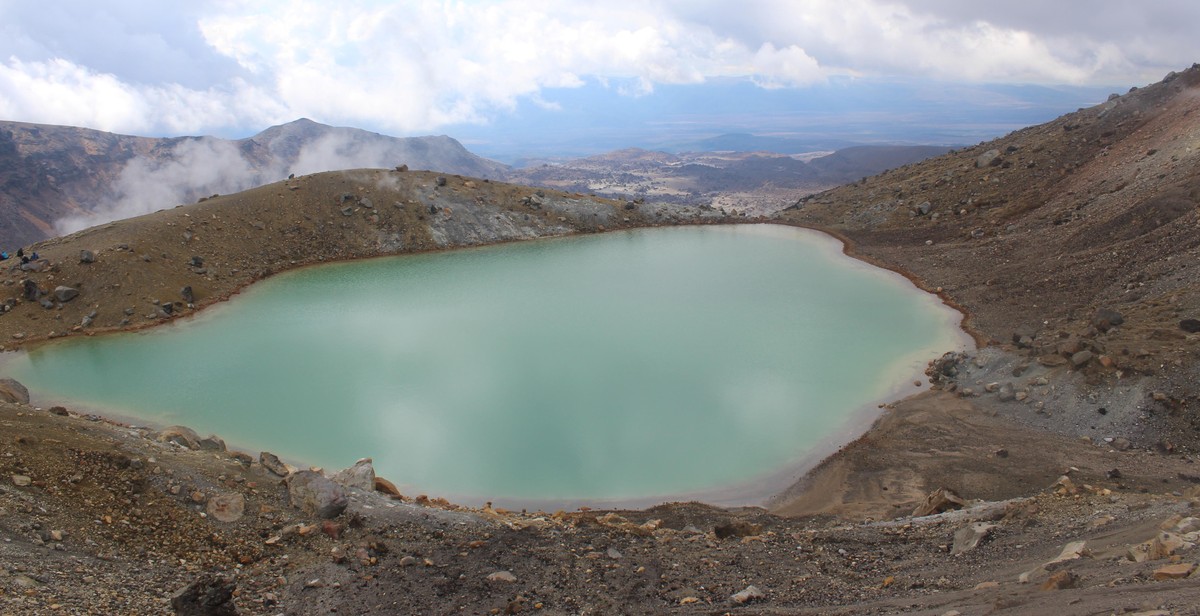How to Prevent Volcanic Gas Inhalation: Safety Measures for Dealing with Volcanic Gas Emissions
Volcanic eruptions are natural disasters that can cause widespread damage and destruction. One of the dangers associated with volcanic eruptions is the release of volcanic gases. These gases can cause respiratory problems, eye irritation, and even death if inhaled in large quantities.
What is Volcanic Gas?
Volcanic gas is a mixture of gases that are released from a volcano. The composition of volcanic gas varies depending on the type of volcano and the type of eruption. The most common gases released during a volcanic eruption are water vapor, carbon dioxide, sulfur dioxide, and hydrogen sulfide.
Volcanic gases are released continuously during an eruption, and can also be emitted from vents on the volcano’s surface even when there is no eruption. These gases can travel long distances, and can pose a threat to human health and the environment.
Types of Volcanic Gas Emissions
There are two main types of volcanic gas emissions: passive and explosive. Passive emissions occur when gas is released from a volcano without an eruption. Explosive emissions occur during an eruption, when gas is released under high pressure.
Both types of emissions can be dangerous, and it is important to take safety measures to prevent inhalation of volcanic gases.
- Stay informed about volcanic activity in your area
- Wear a mask or respirator if necessary
- Stay indoors and close windows and doors if volcanic gas is present
- Evacuate the area if advised by authorities
By taking these safety measures, you can protect yourself and your family from the dangers of volcanic gas inhalation.

The Dangers of Volcanic Gas Inhalation
Volcanoes are not only majestic and awe-inspiring but also capable of spewing out a range of dangerous gases that can pose a threat to human health. The gases emitted by volcanoes include sulfur dioxide, carbon dioxide, hydrogen sulfide, and carbon monoxide, among others. Inhaling these gases can have detrimental effects on the respiratory system, eyes, and skin, among other parts of the body.
Health Effects of Volcanic Gas Inhalation
The health effects of volcanic gas inhalation vary depending on the type of gas and the duration and level of exposure. Sulfur dioxide, for instance, can cause respiratory problems such as coughing, wheezing, and shortness of breath. It can also cause eye and skin irritation. Carbon dioxide, on the other hand, can lead to asphyxiation, especially in confined spaces with limited ventilation. Hydrogen sulfide is toxic and can cause headache, dizziness, nausea, and even death at high concentrations.
How Volcanic Gases Can Affect Your Health
When volcanic gases are released into the atmosphere, they can travel long distances and affect large populations. The gases can also combine with other atmospheric pollutants to form smog, which can exacerbate respiratory problems. People with pre-existing respiratory conditions such as asthma and chronic obstructive pulmonary disease (COPD) are particularly vulnerable to the health effects of volcanic gas inhalation.
Who is Most at Risk?
Everyone exposed to volcanic gas emissions is at risk of health complications, but some groups are more vulnerable than others. These include:
- Children and infants
- Elderly people
- Pregnant women
- People with respiratory conditions such as asthma and COPD
- People with cardiovascular disease
- Outdoor workers such as farmers, construction workers, and miners
| Gas | Health Effects |
|---|---|
| Sulfur dioxide | Respiratory problems, eye and skin irritation |
| Carbon dioxide | Asphyxiation, especially in confined spaces |
| Hydrogen sulfide | Headache, dizziness, nausea, and even death at high concentrations |
It is important to take safety measures to prevent or minimize exposure to volcanic gases to avoid the health complications associated with inhalation. In the next section, we will look at some safety measures that you can take to protect yourself and your loved ones.

Safety Measures for Dealing with Volcanic Gas Emissions
Volcanic gas emissions pose a significant threat to human health and safety. These gases can cause respiratory problems, eye irritation, and even death if inhaled in large quantities. It is crucial to be aware of the potential dangers and take appropriate safety measures to protect yourself and your loved ones. Here are some essential safety measures for dealing with volcanic gas emissions:
Stay Informed
Staying informed is the first step in protecting yourself from volcanic gas emissions. Keep an eye on news and weather reports, and follow the advice of local authorities. If you live in a volcanic area, make sure you know the warning signs of an impending eruption and have a plan in place. Stay up-to-date with the latest information from reliable sources, and be ready to act quickly if necessary.
Protective Gear
Protective gear can help reduce your exposure to volcanic gases. A respirator mask or an air-purifying respirator can filter out harmful particles and gases. Make sure you choose the right type of mask for the specific type of gas that is present. Wear protective goggles or glasses to protect your eyes from irritation and injury. If you must go outside during a volcanic event, wear clothing that covers your skin, including long sleeves and pants, and closed-toe shoes.
Respirator Mask
| Type of Gas | Recommended Respirator Mask |
|---|---|
| Sulfur Dioxide (SO2) | Half-face respirator with NIOSH-approved P100 filters |
| Carbon Dioxide (CO2) | Full-face respirator with NIOSH-approved P100 filters |
| Particulate Matter (PM) | N95 or N99 mask |
Evacuation Plan
An evacuation plan is crucial in the event of a volcanic eruption. Make sure you have a plan in place, and practice it with your family. Know the evacuation routes and the location of evacuation centers. Prepare a disaster kit that includes food, water, medications, and other essentials that you may need in an emergency. If you are instructed to evacuate, do so immediately.
Volcanic gas emissions can be dangerous, but by staying informed, using protective gear, and having an evacuation plan in place, you can minimize your risk of exposure and stay safe during a volcanic event. Remember to always follow the advice of local authorities and take any necessary precautions to protect yourself and your loved ones.

Conclusion
Volcanic gas inhalation can cause serious health problems, and it is important to take safety measures when dealing with volcanic gas emissions. By being aware of the risks and following the guidelines outlined in this article, you can protect yourself and others from the harmful effects of volcanic gas.
Key Takeaways
- Volcanic gas can cause respiratory problems, eye irritation, and skin burns
- It is important to stay informed about volcanic activity in your area
- Wearing a mask or respirator can help protect against volcanic gas inhalation
- Avoiding areas with high concentrations of volcanic gas can help prevent exposure
- Seek medical attention if you experience symptoms of volcanic gas inhalation
Stay Safe
If you live in an area with active volcanoes, it is essential to educate yourself about volcanic gas and take the necessary precautions to protect yourself and your loved ones. Remember to always stay informed, wear the appropriate protective gear, and seek medical attention if you experience any symptoms of volcanic gas inhalation. By following these safety measures, you can stay safe and healthy in the face of volcanic gas emissions.
